As a proud owner of a new German Shepherd, you’re likely filled with excitement and perhaps a bit of anxiety about doing everything right for your furry friend.
I remember when I first brought my new German Shepherd puppy home; I constantly searched for tips on puppy training, behavior, and ensuring a healthy, happy environment for my new companion.
However, even with the best intentions, it’s easy to stumble into common pitfalls. From overlooking the importance of socialization to misunderstanding their exercise needs, these mistakes can impact your German Shepherd’s development and your bond with them.
As someone who has navigated these waters and emerged with a well-adjusted, loyal companion, I want to share my insights and experiences to help you avoid these common errors.
I’ll be sharing practical advice, backed by both personal experience and expert knowledge, to help you understand your German Shepherd’s unique needs.
Let’s get started!
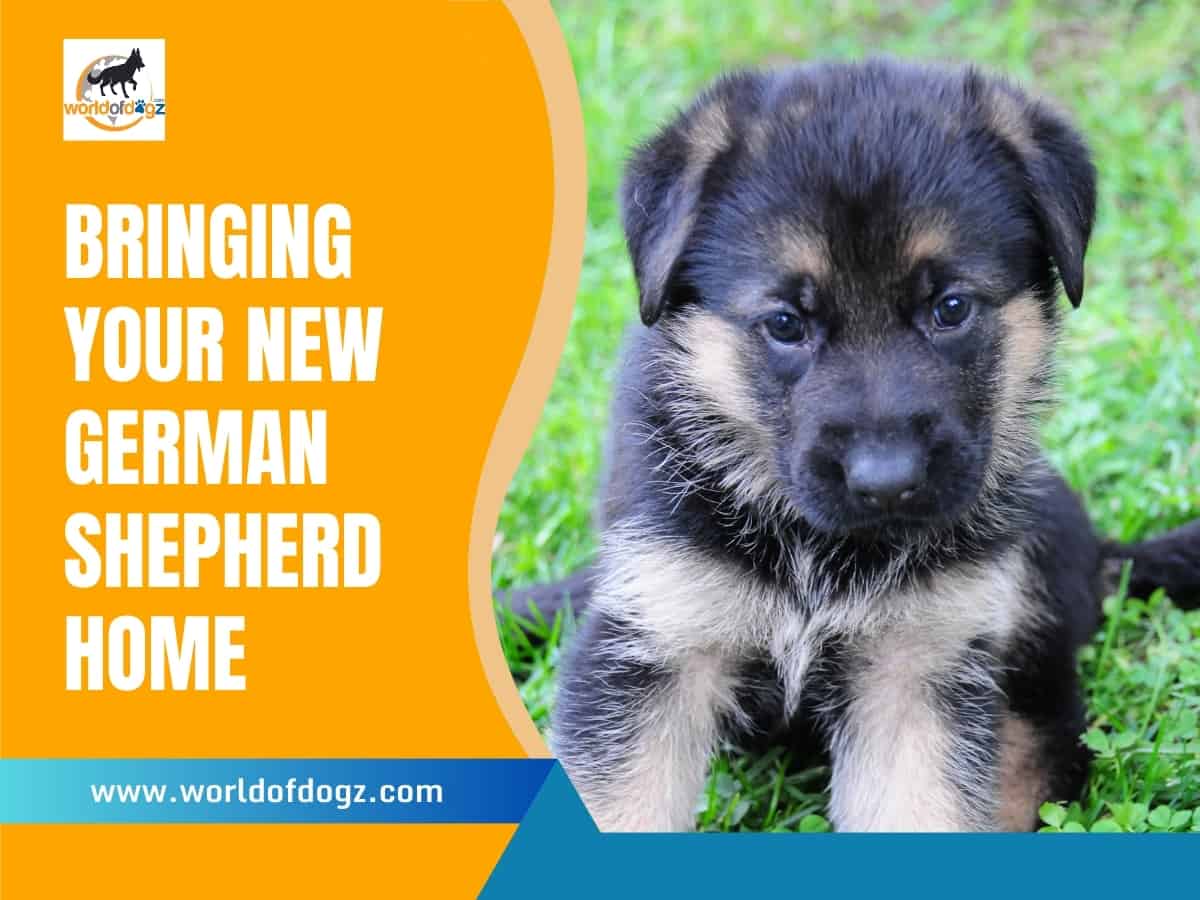
How to Prepare for a New German Shepherd Puppy
To prepare for a new German Shepherd, you must execute two types of tasks. There are the education tasks and the acquisition assignments.
In education, you must learn more about what to do and expect through resources like this website. You should also extend this information to your family.
You simply need to get everything you need to take care of the German Shepherd puppy in acquisition.
Here’s a deeper look at these tasks.
Prepare Family Members – Especially Children
Puppies are trained to get along with humans, but we often miss out on the human side of the responsibility equation.
If you have children, you must teach them how to handle a new German Shepherd puppy before bringing one home. Any dog is good with children as long as they know how to handle it.
Here, let’s explore what you must do to prepare your children/family for a new German Shepherd.
- Teach them to avoid the eyes and other sensitive areas – Children must avoid poking or annoying the dog. Many dogs are particularly sensitive on top of the head, so avoid petting there.
- Teach kids to ask your permission before entering a certain area in your house – This allows you to supervise their initial interactions with the German Shepherd as the puppy’s crate will be placed in that area.
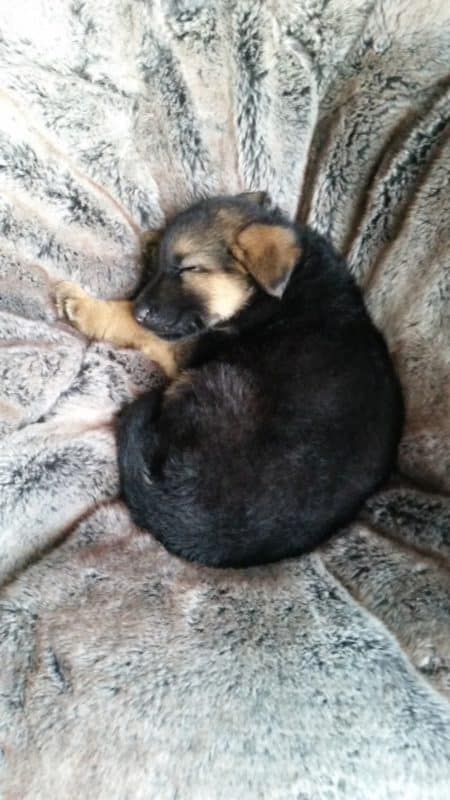
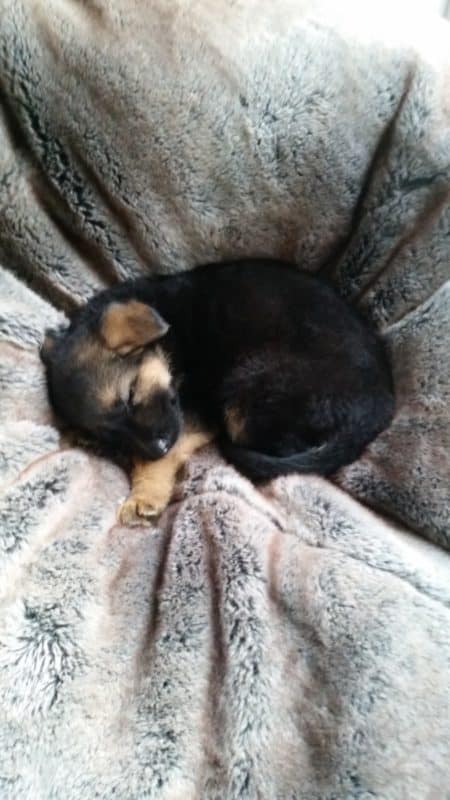
Clear Out Space For The Puppy
You now need to prepare an area for the new pup. You will start by moving furniture, objects, and anything else that takes up the designated space.
You can then place a crate in the area. Ensure the chosen location is not too hot, is draught-free, and is away from direct sunlight.
Puppies are social creatures, so place the crate in a well-used part of the home, not an unused room at the far end of the house.
The best choice is in a busy area, such as the living room or kitchen, where the pup can see everything happening and instantly feel part of the family.
Make The Space Puppy-Friendly
Puppy-proofing is like baby-proofing with one clear difference. While babies don’t start crawling for a while, your new German Shepherd puppy is released at eight weeks old and starts to explore immediately.
You must carefully pad any furniture corners, sharp objects, and protruding appendages in the house to prevent the pup from getting hurt.
Wires and cables pose a genuine risk, so ensure these are not visible, and never leave your pup alone in a room with live wires from appliances.
Puppies are curious and love to explore their new world. Keep chairs and other small furniture items away from tables and worktops so they can’t climb and hurt themselves or access toxic foods such as grapes or chocolate.
I know you might think your pup is way too small to climb on a chair, but believe me, they soon grow!
If you check out my article about German Shepherds’ growth, which includes a handy growth chart, you’ll see what I mean.
Find Your Vet
German Shepherds, like all purebreds, are prone to certain health complications, so it is necessary to have a reliable veterinarian.
This is where the vet will check your pup, record weight, discuss vaccinations schedule, flea and worming treatment, and any concerns you may have.
Put in the work to find an individual vet you like and can call during emergencies. To be the right vet for your new German Shepherd, a professional has to be:
- Nearby – Walking distance is ideal but rare.
- Qualified – Specialization in canine medicine inspires trust compared to all-animal vets.
- Eager to help – The practice has to be willing to help in emergencies.
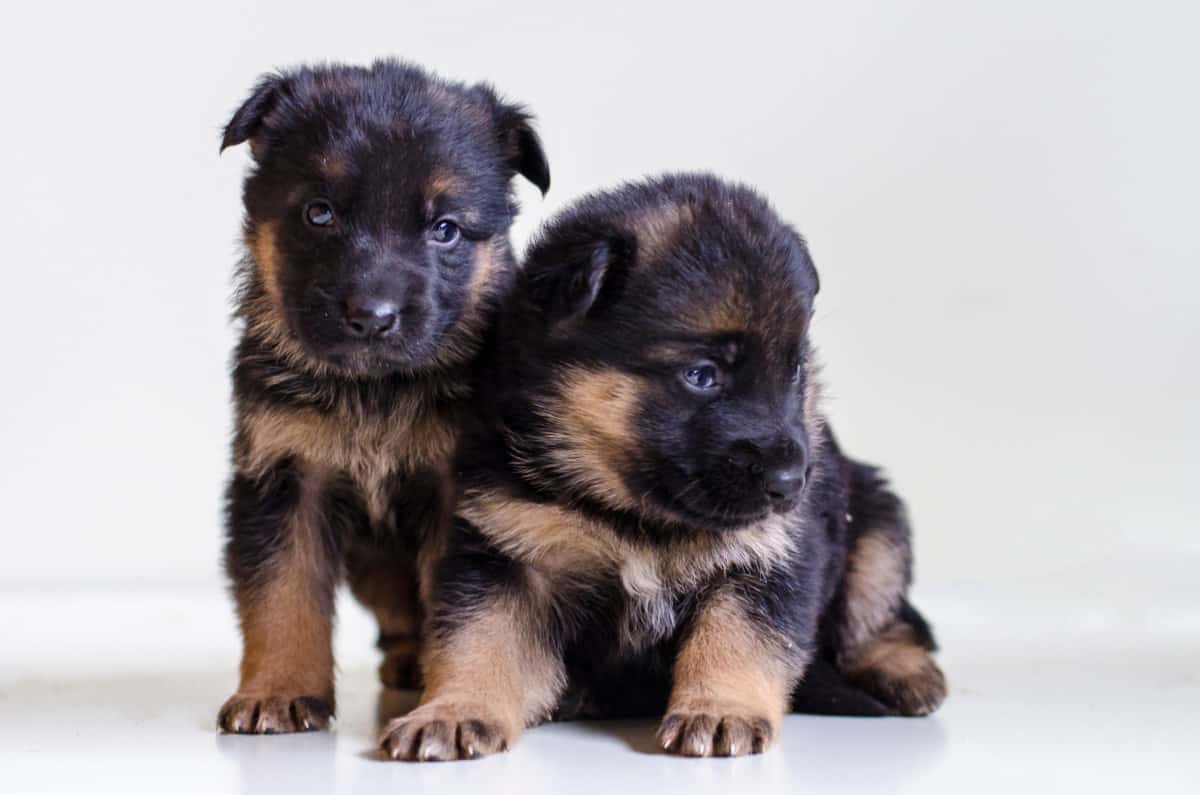
Find a Dog Sitter
Finding a dog sitter or a dog walker before you welcome a puppy feels like finding a divorce lawyer before the nuptials.
Nonetheless, it is wise because you do not know when you might need to leave your dog alone for a while, work away for a few days, or travel.
Not all travel suits puppies, and not all German Shepherds are travel-ready. Knowing whom to call to care for your dog can be a significant relief.
The dog walker doesn’t have to be a professional. They need to be reliable. Here’s the standard for a dog sitter.
Must be a relative, neighbor, or a reputable professional
A dog walker takes care of a family member in your absence. This kind of trust is warranted if you have a neighbor you know well or a relative you can rely on.
Please don’t go to Craigslist and grab an internet stranger without these. Instead, contact a trusted professional with a public-facing brand.
Have some experience with dogs
While it is okay to rely on family for this type of work, you must ensure that the person in charge of walking your dog can handle an energetic German Shepherd.
You can ask for photos of breeds they have taken care of and look for the types of dogs they have handled. Looking after a GSD requires a degree of firmness and confidence.
Have the same training philosophy as you
It helps to find out the person’s training ethics. If you’re a positive reinforcement advocate like me, you do not want a dog-sitter who justifies harsh punishments or uses shock collars, which I’m totally against.
Ask directly about the methods they use to encourage the dog and what they do to discourage bad behavior.
What Do I Need for a New German Shepherd Puppy? Checklist
Dog Crate
Getting a crate for your German Shepherd puppy is quite crucial for the following reasons:
- Allows the puppy to feel secure
- Speeds up potty training
- Keeps the puppy safe by controlling his environment
- Conditions your dog should you need to travel and use a travel crate
Some people erroneously feel guilty for crating their pup. However, dogs need structure, especially when bred from work-driven breeds like German Shepherds.
A dog crate provides a sense of security by reducing the space around the pet. Relative to a puppy’s size, a crate is a manageable space to rest and relax.
A room might be small enough for us, but placing the puppy in it will make him feel like he is in a large, vacant warehouse.
The necessity of getting a dog crate brings up the question of size. What size crate is best for a new GSD puppy?
Read my post on the recommended German Shepherd crate size to find out the best size to buy and why.
But if you want to skip the rationale and get a decent crate for your new German Shepherd, choose the MidWest Homes for Pets iCrate. I love this all-inclusive crate, as you’ve nothing else to buy.
It comes with a free divider and includes a durable and easy-clean removable tray. You can move the divider to make more room as your puppy grows. This crate has roller “feet” to protect your floors should you wish to move it, and it has a carrying handle.
- Newly enhanced with added security features to keep your pet safe | Slide-bolt door latch now feature patented Paw Block and locking tip s to create a safer, more secure home for your pet
- iCrate single door dog crate measures 30L x 19 x 21 inches and is suitable for medium dog breeds with an adult weight of 25 to 40 pounds. If your dog’s weight or measurements are on the higher side for this crate, we recommend buying the next crate size up
- Dog crate includes a divider panel, durable & leak-proof plastic pan, protective rubber feet, carrying handle, and customer support team based in Indiana
- Easy to assemble & portable | Dog crate sets up in seconds with no tools required and conveniently folds flat for travel
- Durable & strong, quality construction creates a secure place for your dog to fulfill their natural instinct to den. Proper ventilation, large door openings with low thresholds, and rounded corner clips make iCrate a safer crate experience for your dog
- PLEASE NOTE: MidWest Homes for Pets manufactures the iCrate & Life Stages dog crates. Assembly and safety instructions are included ; please read all safety instructions prior to use
- To open the door: 1) Disengage the slide-bolt latch; 2) Lift the door to clear the LapLocks; 3) Swing open.
- Patented rounded side clips eliminate sharp ed
Prices pulled from the Amazon Product Advertising API on:
Product prices and availability are accurate as of the date/time indicated and are subject to change. Any price and availability information displayed on [relevant Amazon Site(s), as applicable] at the time of purchase will apply to the purchase of this product.
Note: Clicking the above link(s) will take you to Amazon or an online store where we have an affiliate relationship. If you make a purchase, we may earn a commission at no additional cost to you.
Read More: Best Dog Crates for German Shepherds
As German Shepherds are prone to hip dysplasia, arthritis, and other joint issues, you should invest in a good crate pad. Don’t rely on the thin mats that are no thicker than a towel, as you need to protect your German Shepherd’s joints by cushioning them from hard and jarring surfaces, such as the crate base.
My German Shepherd loved her crate. I draped a dark-colored blanket over the top to make it more den-like. She was around three years old when I finally got rid of it, but some dogs enjoy them for life.
Dog Bed
You might think getting a crate is the same as getting a bed. Some crates come with a mattress or pad disguised as a puppy bed.
Since German Shepherds are big dogs and do not take much time to grow to their full size, you will need an orthopedic dog bed to support their weight and protect their joints.
I like the Big Barker Orthopedic Dog Bed. The company was founded by an individual frustrated by the lack of orthopedic size-friendly options for “big barkers” and devised a dog bed good enough for humans.
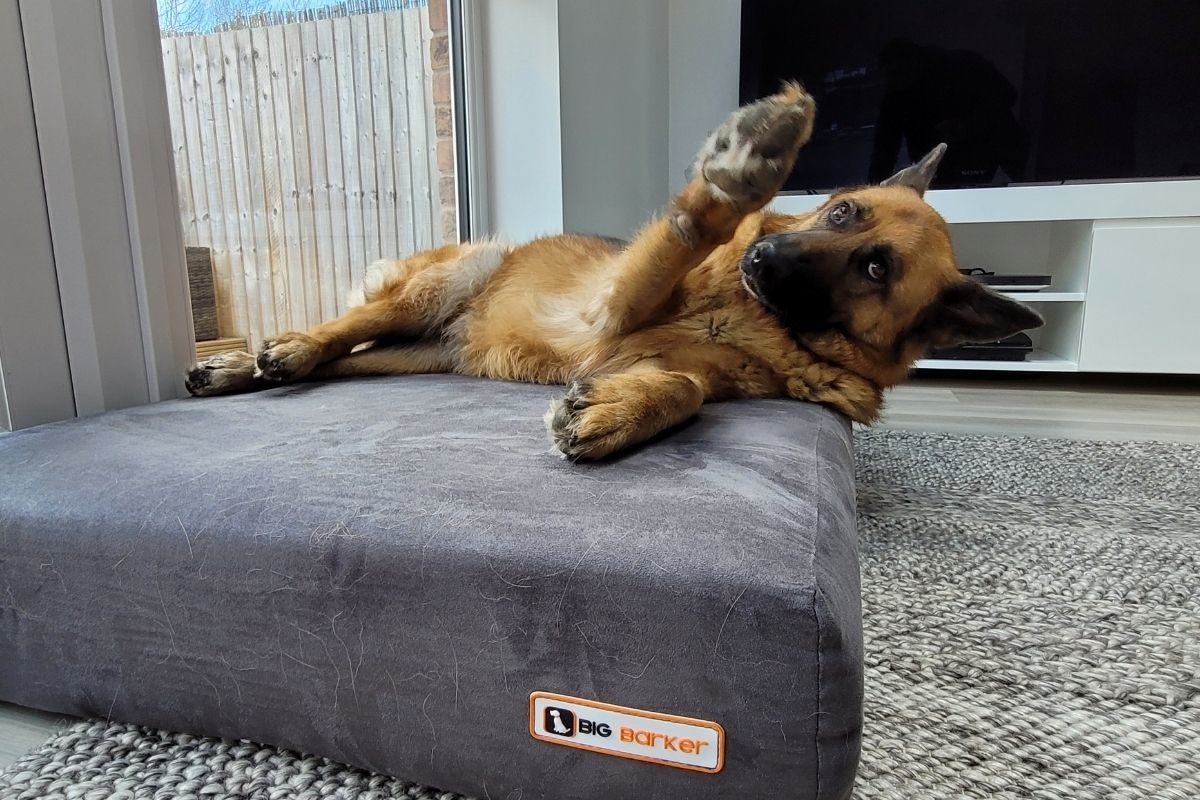
However, there are a few other good ones you can choose from. My post on the best orthopedic dog beds for German Shepherds elaborates on the pros and cons of different dog beds.
The gist is that you need a bed to prevent joint pain that bigger dogs experience. German Shepherds are prone to arthritis, and though a genetic element plays a role, bad crating practices can accelerate such problems.
I chose the Big Barker because of the scientific evidence that it improves joint pain and stiffness in arthritic dogs, enhancing their quality of life.
This means a lot to me as my German Shepherd was diagnosed with spinal osteoarthritis at only six years old, but it helps knowing she sleeps comfortably.
- Dog Beds for Large Dogs: Finally, your big furry friend can stretch, curl up, and rest comfortably all on one bed; Thick, quality-assured foam and soft microsuede make Big Barker beds the only orthopedic dog beds for large dogs
- Clinically Shown to Reduce Joint Pain: Study data has shown that our raised dog beds help ease joint pain and improve mobility; The headrest supports your pet’s head while they sprawl across the rest of the giant dog sofa bed
- Washable Microsuede Cover: Big Barker’s covers are machine washable & smell-resistant; The fabric is designed to withstand rubbing, digging & nesting; Easily remove the zippered cover for shrink-free washing, stain cleaning, or even quick replacement
- Intuitive Zippered Design: We’ve designed our beds with the zipper tucked in & seams sleekly incorporated to keep your pup comfortable; Not only is the microfiber material durably woven, it’s designed to look great in your home
- Elevated Foam Dog Bed: Our foam dog furniture is made in the USA, sustainably sourced & quality-assured to not flatten or pancake over time; Let your best friend rest easy in a soft & durable raised bed backed by a 10-Year Warranty by Big Bar
Prices pulled from the Amazon Product Advertising API on:
Product prices and availability are accurate as of the date/time indicated and are subject to change. Any price and availability information displayed on [relevant Amazon Site(s), as applicable] at the time of purchase will apply to the purchase of this product.
Collar/Harness
German Shepherds need to quickly learn how to walk on a leash properly so they don’t cause problems by reacting to other dogs, pulling, and lunging.
Or worse, they act on their prey drive and try to chase anything that moves, such as squirrels or motorbikes.
Remember, walking is one of the most frequently occurring activities in your puppy’s life, and you will make this easy and a lot of fun as long as you socialize your German Shepherd.
Novice dog masters also make things difficult through a combination of poor choices. First of all, they don’t train the dog to wear a harness from an early age.
Then, they make the situation worse by opting for a collar and using tugging to discipline. This is cruel to the dog and teaches him nothing.
The Walk Your Dog With Love No-Pull Harness is one of the few products designed around the kind treatment of dogs. It’s the harness Willow uses and is just perfect for the German Shepherd breed.
- See our Entire Product line on WalkYourDogWithLove Dot Com MORE CONTROL: It leads your dog from the front to give you steering. Steering means control - like a horse is led. It makes any dog walk a pleasure. Walk Your Dog With Love.
- NO PULLING: Because it is not rear-attached (like a collar, choker, or old-fashioned dog harness), you dont trigger off your dogs natural dog sled team pulling instinct. It stops a dog from pulling.
- NO CHOKING: It is not around your dogs throat, so there is no risk to your dogs neck and so you dont hurt your dog. Dog collars and chokers are just not a friendly - or necessary - way to walk your best friend. It is time for compassion
- EASY ON: You dont have to figure it out; no more leg lifting dance. Just put it over your dogs head and click. Easy.
- COMFORT: No more hard and heavy rings, sliders, or sharp sewn areas that chafe and rub your dog. Also, because it adjusts in 360 degrees, it fits better, so it works better t
Prices pulled from the Amazon Product Advertising API on:
Product prices and availability are accurate as of the date/time indicated and are subject to change. Any price and availability information displayed on [relevant Amazon Site(s), as applicable] at the time of purchase will apply to the purchase of this product.
It is a front-clip harness, meaning you lead your pup from the front, which gives greater control and steering, making it impossible for your dog to pull.
The harness is adjustable and doesn’t bite into the puppy’s skin upon being taut. A fellow dog owner designed it, and it has all the love and care one would expect from an owner who is solving a problem he has previously faced – a dog that pulled.
You can check out my owner’s review here.
You can also learn more about my pick of the best no-pull harnesses for German Shepherds in this article.
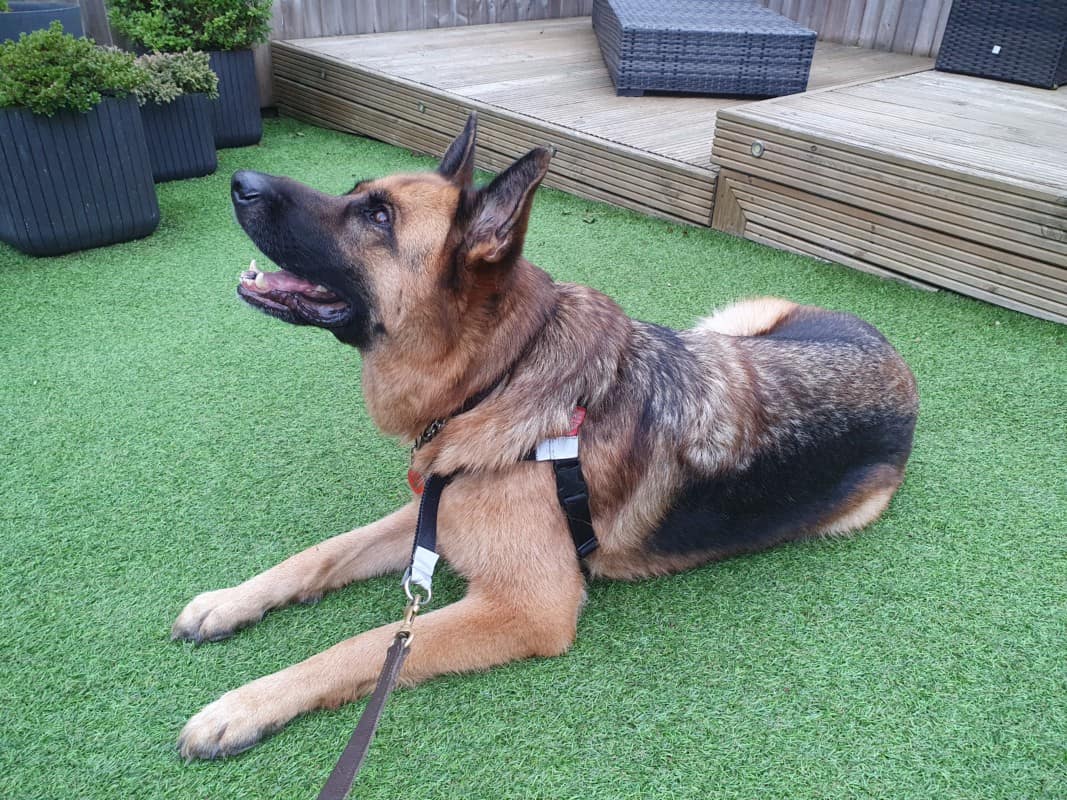
Toys
German Shepherds are full of energy, which means they have to be surrounded by things that can exhaust their excess vitality, such as a range of chew toys, tug toys, and puzzle toys.
These will stimulate his teeth, muscles, and mind, respectively. Of course, having toys doesn’t mean the puppy doesn’t need to go on walks.
Toys help your new German Shepherd develop and stay entertained. You can also use toys to train a German Shepherd to find things and track, but that comes later. For now, you must ensure you get him a large selection of puppy toys.
Make sure to get GSD-specific toys, as some toys meant for physically weaker breeds aren’t meant for German Shepherds. Low-durability toys can disintegrate in a German Shepherd’s jaws.
You can’t go wrong with chew toys and KONG toys, of which my dog has a wide selection of these. Here are two of my favorite posts to help you with these:
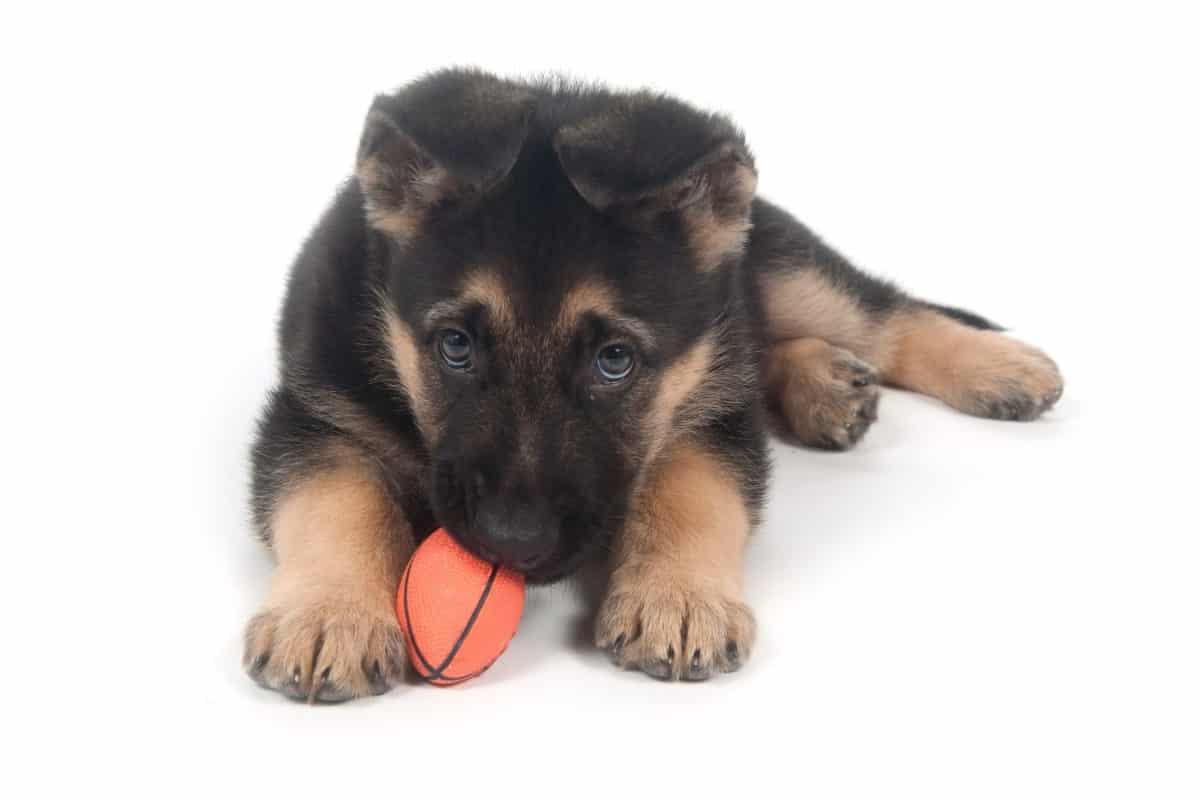
Car Restraint / Travel Crate
Having a German Shepherd means traveling with a German Shepherd, especially when young.
A puppy that isn’t exposed to travel can become asocial or anxious. Your new best friend needs different exercise routines and changes in the environment, both of which can be normalized via travel.
A car restraint allows you to secure your German Shepherd puppy in a car seat safely. This option is for dogs that aren’t too jumpy.
A travel crate is a smaller crate that fits in the trunk. Using a dog crate, as recommended above, will make it easy to communicate that car rides are okay.
Once your puppy doesn’t seem too startled by the prospect of road travel, you can graduate him to a car restraint.
I like the Petmate Vari Dog Kennel because it comes in various sizes, and for the first few months, you might prefer a smaller crate.
This model is made from premium plastic, does not require any tools to set it up, and has lots of vents to keep your pup well-ventilated.
- Sturdy Plastic Dog Crate: Securely and safely protect your pet and your home with this large dog crate that features an easy-open latch to secure the sturdy wire door, and durable fold-down handle making carrying this dog travel crate a breeze
- Suitable for Pets 70-90 lbs: Pet Kennel exterior dimensions - 40 L x 27 W x 30 H; Interior dimensions - 36.2 L x 24.7 W x 28.8 H. Product weight – 31 lbs. If in doubt, buy a size up. No tools required for assembly
- Airline Friendly Dog Carrier: This pet carrier meets most airline cargo specifications. This travel dog crate also has ventilation on 4 sides. Includes built in storage for additional pet identification
- Easy to Keep Clean: Sturdy plastic shell on this dog carrier is easy to clean, with stay-dry moat that surrounds the interior to pulls fluids away from your pet in case of wet accidents, making it a great puppy carrier or kennel trainer for housebreaking
- For Pets and Pet Parents: Petmate provides everyday essentials for pet parents, dogs, cats and other pets such as: litter box accessories, pet toys, cat cages, dog cages, gravity water/food bowls, dog cages, pet beds, puppy crates, cat carriers and more!
- Quality You Can Trust: Made from certified 90% to 100% Pre-Consumer recycled material. Metal nut & bolt assembly. Plastic made in the USA, handle and other kennel components impor
Prices pulled from the Amazon Product Advertising API on:
Product prices and availability are accurate as of the date/time indicated and are subject to change. Any price and availability information displayed on [relevant Amazon Site(s), as applicable] at the time of purchase will apply to the purchase of this product.
Poo Bags
Your new German Shepherd puppy is going to be the cutest thing on earth up until he has to poop! At that time, how much you like having a GSD will be strongly correlated with how close you are to a poo bag.
Repurposing old disposable grocery bags isn’t a sustainable option because a dog needs to go more often than you shop for groceries.
Regardless of whether you buy a pack of poop bags or accumulate enough disposable bags to cover a month of dog poop, you need to have something to carry dog waste. Remember, a puppy poops two to four times a day.
Amazon Basics Unscented Dog Poop Bags are among the most affordable products in the category, with the 900 bags supply being the most economical. These bags are 9 inches x 13 inches, which is a much more efficient size than the standard disposable bag.
You might not need this size initially, but trust me, they are the best for an adult German Shepherd!
Dog Shampoo
You must get dry shampoo for your dog because German Shepherds do not need to bathe more than a few times a year. In other words, your new puppy is half a dozen baths away from adulthood.
In the meantime, something is required to keep him clean, right? Waterless shampoo for dogs helps keep the dog’s coat clean and healthy while he is on a shower hiatus.
Tropiclean Waterless Shampoo for Pets is a high-quality, low-priced option made from natural ingredients like plum, oatmeal, and cucumber.
The shampoo softens your dog’s fur and promotes shine. It is backed by a market leader in natural wellness and has accumulated over 4,000 positive reviews and ratings on Amazon.
- NO-RINSE FORMULA – TropiClean hypoallergenic pet shampoo is a no-rinse dog shampoo that creates a quick and easy cleanup for those in-between bath days.
- FRESH & CLEAN – The dog dry shampoo is a gentle formula that will leave their coat with subtle coconut scent, making it perfect for pets with sensitive skin.
- FEEL-GOOD INGREDIENTS – Our waterless coconut dog shampoo is derived from natural ingredients such as moisturizing coconut and oatmeal for a silky soft coat.
- PET PARENT APPROVED – The no-rinse formula is paraben, dye, soap and cruelty free and suitable for use on dogs and cats 12 weeks or older.
- TROPICLEAN – For a tropical experience, pair this with our deodorizing spray, hypoallergenic wipes or waterless facial cleans
Prices pulled from the Amazon Product Advertising API on:
Product prices and availability are accurate as of the date/time indicated and are subject to change. Any price and availability information displayed on [relevant Amazon Site(s), as applicable] at the time of purchase will apply to the purchase of this product.
Dog Food
Food, water, and shelter are some of the basic needs of all mammals. Dogs are no exception, especially when they are bred under human supervision.
Therefore, getting dog food is one of the most important prerequisites for bringing home a new German Shepherd.
I have a complete guide about the best diet for German Shepherds, including nutrition, types of dog foods, and exactly what they can and can’t eat.
However, in all honesty, getting a bag directly from the breeder is advisable to cover the first month’s supply. After that, just ensure you choose a large breed food.
The puppy’s environment will change drastically, and as he will have already started consuming food aside from his mother’s milk, you shouldn’t switch away from it right away.
Once you’ve got your new best friend settled in, you can transition to the food of your choice.
Bringing a New German Shepherd Puppy Home
So, you have prepared for your puppy’s arrival by educating the family and getting all you need to take care of the dog for the first few weeks. All that’s left now is to bring home the new puppy.
Bringing home a new pet is a joyful experience. You might find yourself constantly staring at the beautiful yet timid puppy, and it will take a couple of weeks for the puppy to feel at home.
Until then, the dog will be open to cuddles and start interacting with the person who feeds him and plays with him. Make sure he spends time inside the crate as well as outside it.
You’ll soon notice he will follow you around. That’s when you can reward him and encourage this behavior.
It might be inconvenient to accommodate an inquisitive pup, but it is far more inconvenient to have one that’s too scared to socialize.
The dog may seem shy and aloof for the bulk of the first week, with the first day being his most seemingly introverted one.
First Night With a New German Shepherd Puppy
The first night with your new puppy is difficult; however, stay calm, as it’s crucial for your bond with him. The dog will miss his pack and call out for them with whining or whimpering sounds or even barking.
You should ensure he feels safe and secure and only comfort him through the night when you take him for a toilet break. Don’t fuss him, but quickly settle him back down again in his crate or bed.
Watch How To Survive Your Pup’s First Night…
Also, don’t worry about teaching the puppy that he’ll get attention whenever he cries, as completely ignoring him can cause much more stress during the first night.
Your German Shepherd puppy will need comfort, and you can do a few things to help him feel better.
- Comfort the pup to make him feel secure.
- Feed the puppy and make sure he is warm.
- Leave a blanket with the mother’s smell on it to help comfort him.
- Cuddle the puppy, but don’t overwhelm him by doing too much.
- Turn the lights off and make sure he gets enough sleep.
I’m often asked the question, should you let your German Shepherd sleep with you? There’s no harm in allowing your new puppy to sleep in the same room or just outside the bedroom for the first few weeks, but don’t let him sleep on your bed.
Your new German Shepherd needs to get used to a schedule, work on independence, and see you as the leading figure.
How Long Should a German Shepherd Puppy Sleep at Night?
One of the differences you will notice when your puppy is freshly released from the breeder is his excessive appetite for sleep. Some might want the puppy to wake up to cuddle. Others will wonder if it is healthy for the puppy to sleep so much.
Generally, a German Shepherd puppy should sleep 8 hours at night and 10-12 hours during the day. However, the dog should not be forced to fit a schedule and must be left to determine how he divides his 18-20 hours of sleep in the first few weeks of adoption.
Final Thoughts
The arrival of a new German Shepherd puppy can be an exciting time, but excitement can also inspire nervousness. As long as you have all the items you need and your family knows what to expect, there’s not much to worry about.
The puppy will feel less overwhelmed and scared after the first three days and settle further during the first three weeks. This is the time to have a good German Shepherd puppy training schedule so you know what to teach and when.










